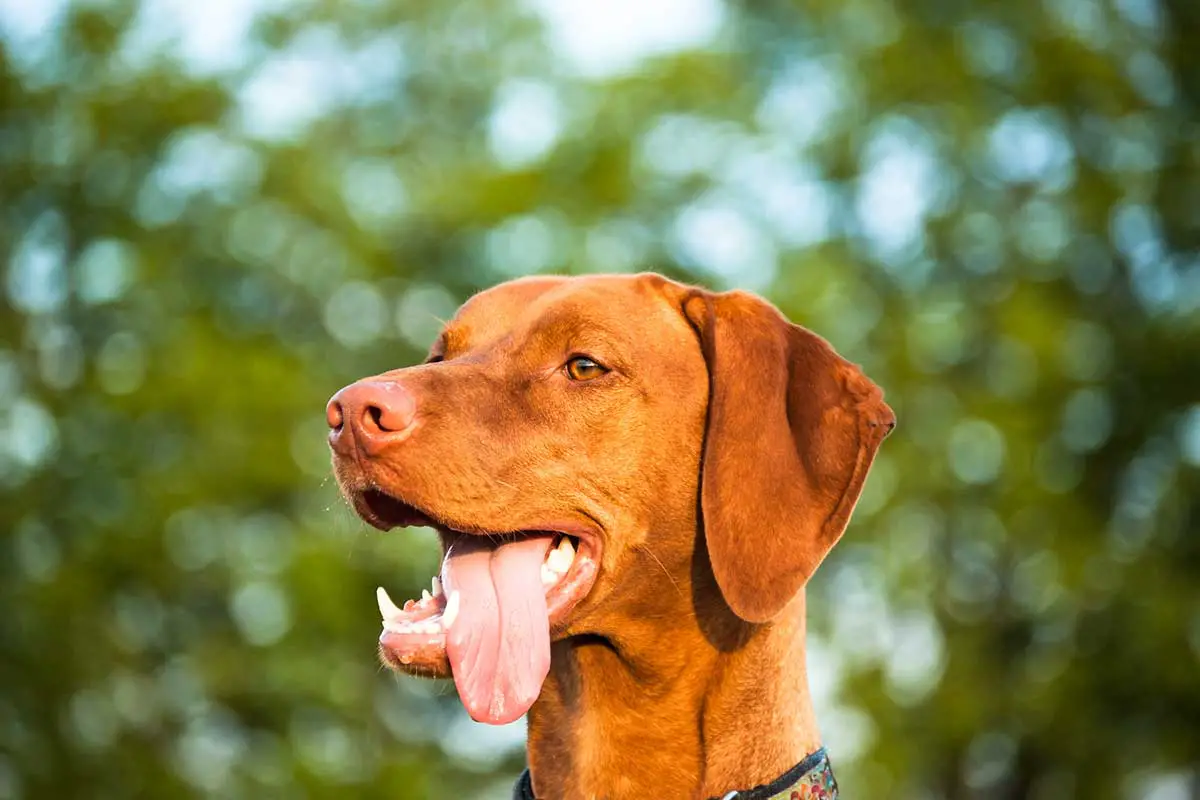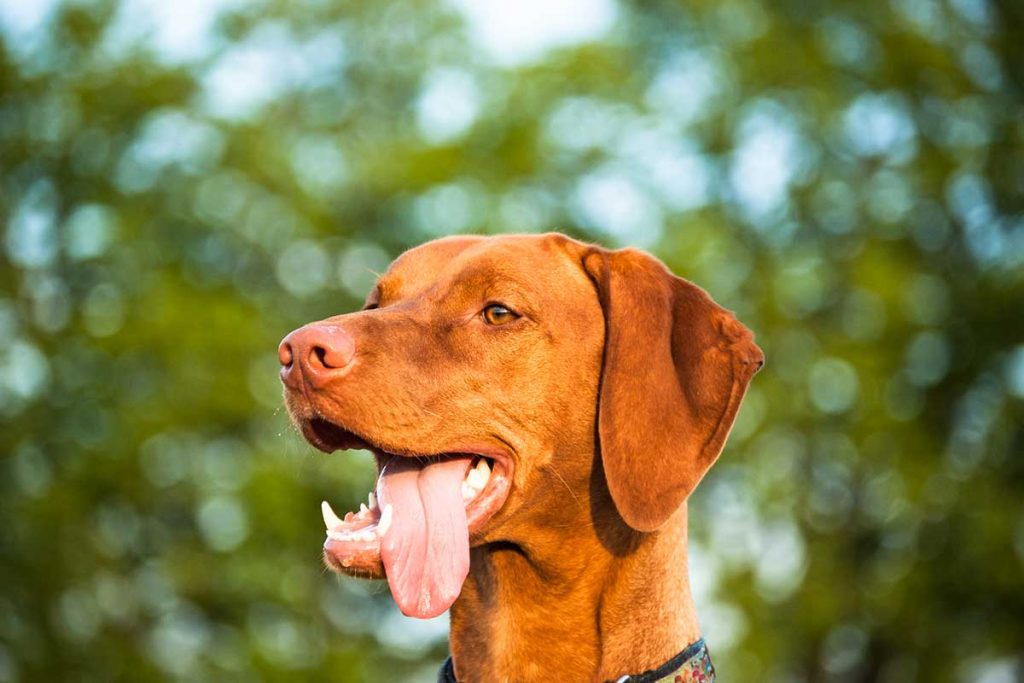Most pet parents know how important it is to take care of their dog’s teeth, but actually doing it can be a challenge.
The first step in the process is to understand your dog’s teeth, which aren’t all that different from your own.
So, in today’s article, I will be looking at just how many teeth your dog should have.
While all dog breeds have the same number of teeth, despite their very difficult facial structures, adults and puppies have different dental structures.
Below, I will look at the number and arrangement of adult teeth and then baby teeth and the timeline for the growth and replacement.
Finally, I’ll share a few top tips on the best way to take care of your dog’s teeth.
Spoiler alert! Yes, the answer is regular brushing.
Canine Dental 101 – Adult Dog Dental Structure
All adult dogs have the same number of teeth regardless of breed.
That means a long-nosed Labrador and a short nosed Pug have the same dental structure even though they have radically different facial structures.
Adult dogs have 42 teeth. This includes 12 incisors, 4 canines, 16 premolars, and 10 molars.
Incisors are the smaller, sharper, teeth at the front on both the upper and lower jaw. These are generally used for scraping at bits of meat and self-grooming.
Canines are the vampire-like fangs that sit behind the incisors. These teeth help dogs tear into meat, hold onto objects, and nip at heels.
Pro-molars are the squarer teeth on both the top and bottom jaw. They are also sometimes called carnassials. They are generally used for shredding and mashing up food before swallowing it down.
Molars are the largest teeth at the back of the jaw, just like in humans. These are strong teeth for crunching hard things, like kibble and pieces of bone.
Below are some other important canine tooth terms and information about them you might find useful when discussing your dog’s dental health with your veterinarian.
- Alveolus – the tooth socket that provides a bed for the root.
- Brachycephalic – the shape of a dog’s head when it is flat, like a pug’s.
- Crown – the part of the tooth visible above the gum line.
- Deciduous – baby teeth that will be lost and replaced with adult teeth.
- Dolichocephalic – the shape of a dog’s head when it is long and narrow, like a greyhound.
- Enamel – the hard, white substance that covers the crown of the tooth.
- Gingiva – the gums (gingivitis is inflammation of the gums).
- Malocclusion – improper alignment of the teeth.
- Mandible – the lower jaw.
- Maxilla – the upper jaw.
- Mesaticephalic – the shape of a dog’s head that is medium-length, like a Labrador.
- Neck – the part of the tooth between the crown and the root located around the gum line.
- Periodontal Ligament – the fibrous structure that holds the tooth in its socket.
- Pulp – the fleshy part at the center of the tooth. It is composed of soft tissue, cells, blood vessels, and nerve endings.
- Root – the part of the tooth under the gum line.
Puppy Dental Structure
Puppies have fewer teeth than adult dogs because they do not have as many premolars and also have no molars. Puppies have 12 incisors, 4 canines, and 12 premolars.
When exactly their teeth will come in, fall out, and be replaced by adult teeth depends on the breed of the dog. But a general timeline for puppy teeth is provided below.
2-4 Weeks
Most puppies will develop their first teeth at 2 to 4 weeks of age.
They should still be with their mother and breeder at this age, and their mother will start to become more reluctant to feed her pups because their growing teeth can irritate her nipples.
Nevertheless, mother dogs usually keep nursing until their puppies are 6 to 8 weeks old.
5-6 Weeks
By this age, your puppy should have their complete set of 28 puppy teeth. This is when you will see their mother walking around with her puppies behind her.
The puppies will still want to feed, but their mother is not interested at this point.
It is at this age that their breeder will typically start to give them solid food, which is usually mashed-up kibble mixed with water to make it easier to chew.
12-16 Weeks
At around 12 weeks or so, your puppy will start to lose their baby teeth. This can be painful because not only are they losing their teeth, new adult teeth are growing up underneath and pushing them out.
Soft chew toys or icy toys that provide cold comfort can be helpful at this time.
It is a good idea to start brushing your puppy’s teeth at this time.
Not only are some of their permanent teeth in, but this is also an ideal age to train them to be accustomed to having you messing around inside their mouth.
If you don’t start young, it can be quite challenging for them to become accustomed to this process.
Just like human children, their adult teeth won’t all grow in at the same time. You can expect the regrowth to start at the front with the incisors and work around towards the back of the jaw.
Yep, we notice the incisors start to fall out first. They’re usually so small you may not notice them falling out. In our experience, our pups usually swallow some of their teeth.
We usually notice the incisors missing when opening the front of our puppy’s mouth.
If you’re observant you’ll also sometimes notice your puppy playing or chewing on their fallen teeth.
6 Months
By six months old, your puppy should have their full set of 42 adult teeth. This is also the time for you to start taking your dog’s dental care very seriously.
Canine Dental Health
While few pet parents manage it, most veterinarians recommend you brush your dog’s teeth with a canine toothbrush and toothpaste every day.
If you start doing this with your pup from a young age with other grooming essentials, it can be possible and even manageable. But let’s get real–rarely do dog owners actually brush their dogs’ teeth daily.
For more information on canine tooth brushing, read our article: Should I Brush My Dog’s Teeth?
While daily brushing might be out of the question, you should still commit to brushing your dog’s teeth at least once or twice a week.
In between, you can use dental chew toys that help remove plaque from your dog’s teeth through friction. You can find the best dental chews on Chewy here.
In addition to regular brushing, you should take your dog to the vet for regular professional cleans, just like you go to the dentist for a deep clean.
This also lets your veterinarian double-check for serious problems such as cracked teeth and gingivitis.
Read our guide to How to Make Brushing Your Dog’s Teeth a Habit.
FAQs About Dog Teeth
Do all breeds of dog have 42 teeth?
Yes. All adult dogs, regardless of their breed, have 42 teeth. So, yes, that means a small pug with a squashed face, a long faced greyhound, and a large labrador all have the same number of teeth.
Can a dog survive without teeth?
If your dog needs to have all of their teeth extracted for some medical reason, they can survive without teeth.
Their diet will obviously need to change to non-chewable foods. The same milk replacers they drank as a puppy can be a good source of nutrients for older dogs with dental issues.
Do older dogs lose their teeth?
Losing teeth is not part of the natural aging process for dogs.
If an older dog starts losing their teeth, it is usually a symptom of an underlying medical condition, such as dental disease, and you should consult your vet.
How long are dogs in pain after a tooth extraction?
The recovery time for a tooth extraction depends on the nature of the procedure.
For example, if the veterinarian removed a smaller rotting tooth with a dead root, your dog may feel better within 24 hours.
Larger molars at the back with deep roots well-embedded in the tissues will require a longer recovery. Your vet should provide you with post-surgery pain medicine.
Can a vet pull a dog’s teeth without anesthesia?
Anesthesia is almost always used when performing dental procedures on dogs for the simple reason that if your dog is awake, they are unlikely to hold still and let the vet complete their work.
The procedure can also be quite stressful for most dogs if they are awake.
The Verdict
Healthy adult dogs should have a set of 42 chompers that should be brushed on a regular basis, and even as often as daily if you can manage it.
Puppies have fewer teeth, just 28, and these generally fall out and become replaced by their adult teeth by the time they are six months old.
While they don’t need to be brushed as regularly, it is a good idea to start brushing your dog’s teeth young so that they become accustomed to the process in later life.
To sum up, here are three tips to keep your dog’s teeth healthy:
- Brush your dog’s teeth daily–or at least as often as you can manage
- Get regular teeth cleanings at the vet
- Add dental chews to your dog’s diet
Not sure if you can manage it?
Read our guide to Alternatives to Brushing A Dog’s Teeth.
I hate to admit it but I don’t brush my dog’s teeth daily. However, after writing this article I got in there and gave those pearly whites a nice scrub down.
Did you count the number of teeth your dog’s mouth?
Hopefully, you counted off 42 sparkling white teeth.

